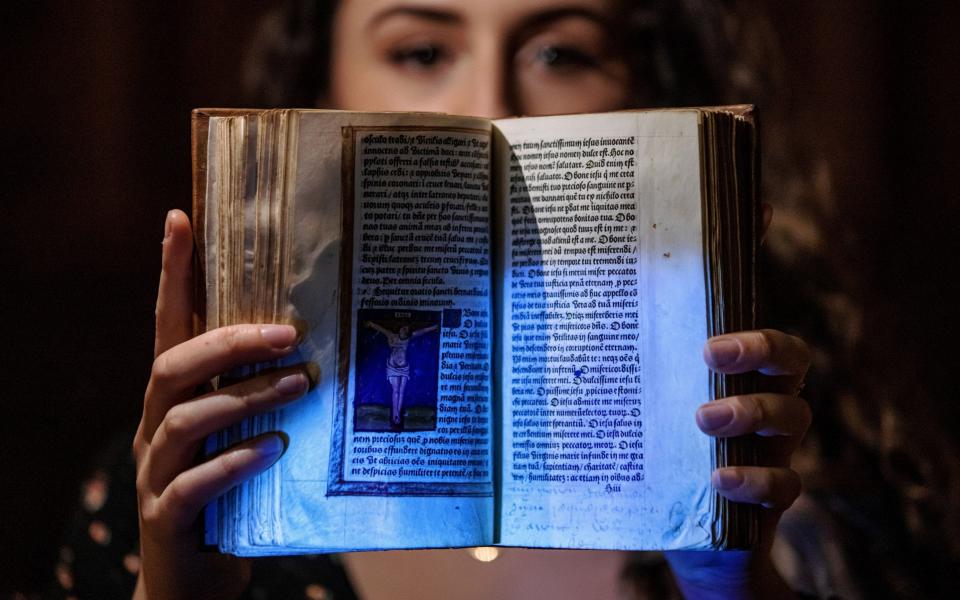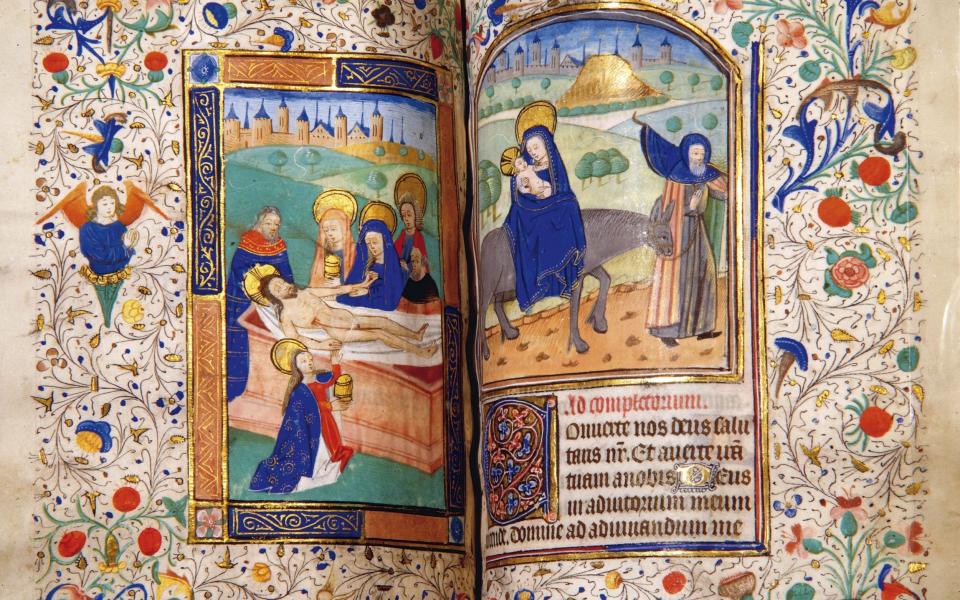Anne Boleyn's prayer book secretly saved through female 'solidarity'

- Oops!Something went wrong.Please try again later.
- Oops!Something went wrong.Please try again later.
- Oops!Something went wrong.Please try again later.
Anne Boleyn's prayer book was hidden by friends in an act of female "solidarity" in defiance of Henry VIII, researchers have revealed after finding secret signatures.
The Queen of England, who failed to give her husband a male heir, was beheaded in 1536 after being convicted of adultery and treason in a trial orchestrated to get rid of her.
A Book of Hours owned and inscribed by Anne disappeared for centuries after her death before reemerging in the collection of William Waldorf Astor, who bought the queen’s childhood home of Hever Castle in 1903.
The fate of the book immediately after her death had remained a mystery, but a new study using ultraviolet light has revealed erased signatures belonging to a series of women in the family of Anne’s childhood friend Elizabeth Hill.
Owning something associated with an alleged traitor would have risked the wrath of Henry, and researchers believe the book was secretly handed down for decades through the Hill family’s female line in memory of the executed queen.

Former Hever Castle steward Kate McCaffrey, who discovered the erased signatures in the prayer book, told The Telegraph: “It was an act of real solidarity and female community.
“They definitely had personal connections that they chose to cherish over the laws and the whims of Henry.
“Henry encouraged a widespread erasure of Anne from history after her execution. If they were found with the books it would have been a very blatant display of disloyalty.
“It would have been dangerous to own anything associated with her, but these women seem to have kept this book safe.”
The prayer book was likely commissioned by Henry for the household of his first wife Catherine of Aragon in the 1520s, and Anne would have received a copy because she was Catherine’s lady in waiting.
Anne became Queen in 1533 after Henry split with the Catholic Church, but after three years of marriage she was sent to the scaffold and the Book of Hours, now held at Hever Castle, appears to have gone to her courtier friend Elizabeth Hill.

Ultraviolet light used to create a greater contrast on old manuscripts has revealed the erased signatures and devotional messages of Hill’s mother, aunt, and a female cousin, who were members of the provincial gentry of Tudor Kent. Only one man, Hill's uncle, has signed the book.
Ms McCaffrey believes the document was passed from woman to woman from 1536 to at least 1616, despite the risk of courtly disfavour involved with keeping it, and may eventually have been shown by Hill’s daughter Mary to her own royal friend, the future Elizabeth I.
Ms McCaffrey said: “It really comes full circle. What makes the book so dangerous to preserve, its association with Anne, actually becomes the main reason for preserving it when Elizabeth I comes to the throne (in 1558) and wants her mother to be remembered.

“Mary Hill was a very close friend of Elizabeth I, so a poignant and likely possibility is that Mary was able to show Elizabeth her mother’s signed inscription in the book.”
While the possession of the book would have been risky during Henry’s lifetime, Ms McCaffrey believes the erasure of signatures and messages written below prayers in the Book of Hours likely occurred much later.
Anne’s inscription would have been considered more valuable to collectors than those of the obscure other women, Ms McCaffrey said, and their writing may have been scrubbed from the manuscript in preparation for sale.
Ms McCaffrey intends to continue research into the 500-year-old book to discover who owned the volume during the centuries between the Hill family and Lord Astor.

